|
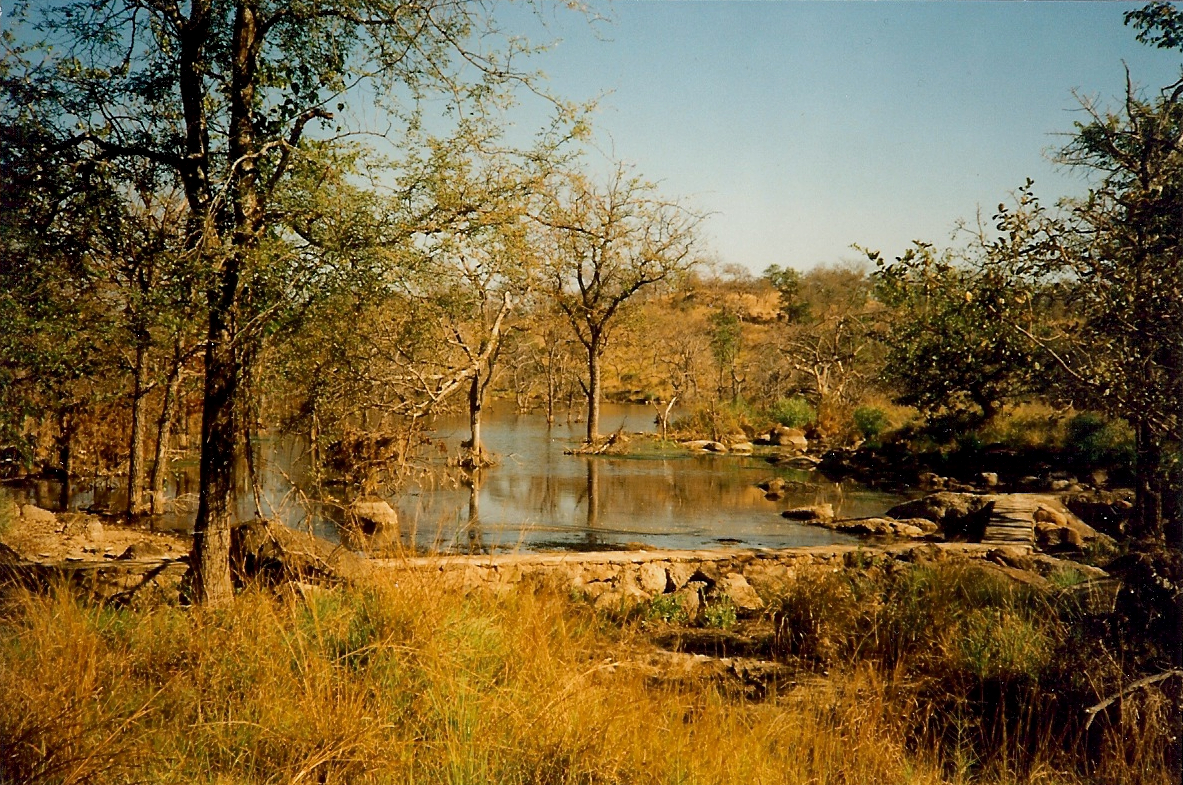
LARGE
BORE RIFLES, BONE SMASHERS, ETC...
text by Cal Pappas
photos
by Matt DeVincenzi and Doug E. Griffin
The title of choice for this article was borrowed from an advertisement
in a William Evans catalog from the 1880s. if there was ever any doubt about the large bore rifles being "bone smashers" no doubt will remain after pulling the
trigger on a full-house load of black powder. How-ever, before
divulging into the
realm of
ballistics perhaps a bit of information of this particular
rifle should be in order.
After shooting some 8-bore double rifles with a friend
in New Hampshire in the latter 1990s (which began a fascination with these, the largest of firearms) I knew that someday I
had to own one. I had heard from those "in the know" that two different 8-bores existed. The first (and most common) was the
standard 8-bore shooting a bullet or ball of an approximate diameter of .835". Rifles of this caliber utilized a
paper case or a thick-walled brass case from 3 1/8 to 4 inches in length, with 3 1/4" the most common.
The second 8-bore, and of a more rare variety, was
referred to as the "large" 8-bore and shot an .875" diameter bullet from a thin-walled brass case. And, in the spring of 2000 (May in Alaska) when I noticed a large 8-bore for
sale in the catalog of Westley Richards I was immediately on the phone inquiring about the details and specifications.
After
the standard gun room negotiations a deal was struck and the rifle was mailed to my home in Anchorage in time for a Memorial Day shoot at my cabin.
When the rifle arrived I was in awe of its size. In
"used but not abused" condition with excellent bores this cannon was begging to be shot. In a separate box were reloading
dies, shell holder, paradox-style bullet mould and 18 rounds of brass cases with shotshell primer pockets (but no headstamp).
The proof marks
told me this large 8-bore was manufactured in Birmingham, England, and was later retailed by the firm of Walter Locke
and Co. of Calcutta, India. The barrels measured 24 inches long and
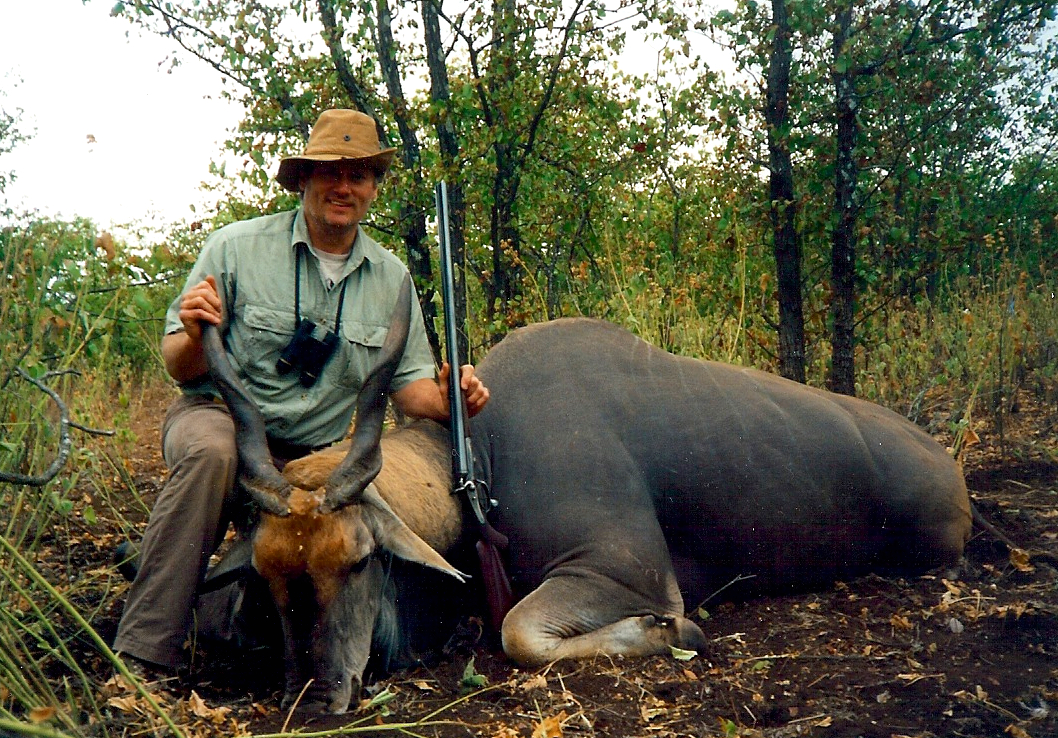
weighed 10 1 /2 pounds. A 3/4" file-cut rib provided a wide base for the 3-leaf ex-press sight graduated
for 50-100-150 yards. The weight of the rifle was 17 pounds, the stock sported a comfortable 14 1/4" pull (including the solid
rubber recoil heel plate) and the pistol grip has a gentle slope to it but not enough to qualify as a semi-pistol grip. (This
open grip' feature is much appreciated as it keeps the hand a bit farther back from the trigger guard thereby preventing
painful contact with the middle finger upon ignition).
The receiver still retained much of the original case color between the hammers and other protected areas.
Knowing
the bore diameter I ordered a round ball mould and a rounded flat nose bullet from NEI of Scappose, Oregon, (503-543-6776).
I also spoke to a friend in a nearby town who is knowledgeable in the bore rifles and he suggested several loads, both in
smokeless and black powder, for the three bullet types.
To me there is absolutely no use in owning a fine and historical rifle and keeping it in the safe to look at and (hopefully)
appreciate in value over the years. They were meant to be shot a hundred years ago and they are meant to be shot today. Not
to do so would be an injustice.
First
of all, bullets had to be cast. I enjoy the simplicity and ease of wheel weights and have an ample supply. The three bullet
types weighed as follows: the round
balls cast to 1000 grains, the paradox bullet at 1350 grains,
and the flat-nosed bullet at 1620 grains. A lesson was to be learned here. A 1000-grain ball is seven balls to the
pound
thereby
making my rifle
(and all
other "large" 8-bores) a 7-bore. (A true 8-bore has round
balls weighing
eight to the pound or 875 grains). In muzzleloading
days the
proper bore size was
stamped
on the rifle. When the transition to breech-loader was made it seems the proof houses grouped the 8 and 7 bores under the
8 bore stamp and the 4 and the 5 bores were both stamped with a 4. The bore stamp should be located in a small diamond on
the barrel flats.
The balls
cast to .880" and I ran them (and the other two bullet styles) through a .875" sizing die. This makes them easier

|
| Jerry and Rose Whitehead at Marakanga Ranch |
to seat in the
case and all bullets fit the bore grooves tight but not overly so. I pan lubed the two larger bullets with LBT Commercial
Blue--a bullet lube with the consistency of candle wax thereby avoiding the sticky and greasy mess of softer lubes and rolled
the balls in Lee alox to lube the 'equator'.
At this time I asked a local gunsmith to
make a chamber cast. My rifle has chambers 3 1/4" long with a 3/4" throat before meeting the rifling. The brass cases
hold nearly 15 drams of black powder if filled to the top. The rim of the case is .100" thick and 1.00" in diameter. Shooting
this rifle was going to be fun and both a historical and learning experience-everything shooting should be. But...where to begin?
In the long
days of the Alaska summers in 2000 and 2001 I shot my big rifle for enjoyment at targets. During the summer of 2002 I
sustained a ruptured Achilles ten-don on the last day of a hunting trip in South Africa. Since I would not be shooting
the big bore that summer I sent the Locke off to Griffin and Howe in New Jersey (908-766-2287) for an examination and
recommendation as to refinishing. Paul Chapman, vice president, suggested leaving the receiver as it was as just enough case
colors remained to give the rifle character. The stock was to be de-oiled and hand-rubbed with an English oil finish and the
ancient recoil pad replaced. The barrels were to be blued and an old 10-bore oak and leather case was on hand if I cared to
have my rifle fitted to it. Of course I did!
By spring of
2003 the rifle was returned to me and it looked magnificent. I would not have expected less from the finest custom gun
and rifle shop in the States. The case was not quite
the size required so Mike Messina (516-794-1979) set the barrels on their side and had to cut a recess in the lid and
bottom of the case. He also had to recess the areas in contact with the hammer screws. Now it was time for some serious shooting
over a chronograph to see what this 7 bore could man-age. Since black powder was the original propellant that is where
the shooting was to begin but smokeless propellants were the long term goal due to a personal dislike of the immediate
cleaning of both rifle and brass that is necessitated by the corrosive qualities of black powder.
Reloading components
were gathered on my bench: Fg GOEX, 1 1/4x12 dies, Winchester 209 shotgun primers, 1/8" over powder card wads, 1/2" felt
filler wads, 1000-, 1350-, and 1620-grain projectiles, and some handy homemade cartridge holders. (Plastic .375 magnum 20-round
cartridge boxes are drilled with a 1" bit transforming four cartridge chambers into one large chamber thereby equating to
a 5-round box).
The velocity
figures below were the aver-age of six shots. Since the rifle came with 18 cases, it was convenient to shoot three groups
of six shots at the range before returning home to reload again. The velocities I obtained were less than expected due to
the quality of today's black powder. In the days when black powder was the only propellant available the manufactures competed
with each other to make the best stuff they could. Today, it seems technology has reversed itself. Grain for grain, modern
powder falls a bit short.
I began with
8 drams (220 grains at 27.5 grains to the dram) and increased by one dram increments to a maximum of 14.
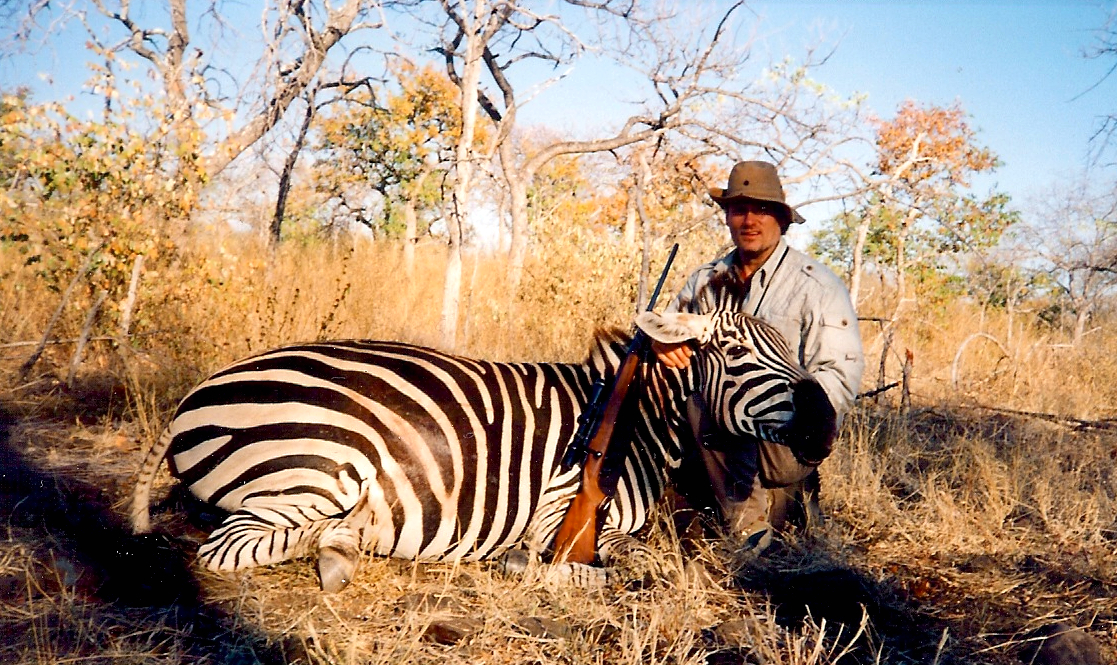
The muzzle velocity was measured by a PACT chronograph
and muzzle energy was calculated using
the formula: velocity squared multiplied by the bullet weight and divided by 450240. John
Taylor's knock out value is calculated thusly: bullet weight x velocity x bullet diameter divided by 7000. Using
the 1000-grain round ball the ballistics were:
|
charge
(Taylor) |
MV |
ME |
MKO |
|
8 drams |
1031 |
2361 |
129 |
|
9 drams |
1116 |
2766 |
139 |
|
10 drams |
1196 |
3177 |
150 |
|
11 drams |
1243 |
3431 |
155 |
|
12 drams |
1295 |
3724 |
162 |
|
13 drams |
1296 |
|
|
|
14 drams |
1301 |
|
|
NOTES: The velocity did not increase after 12
drams or 330 grains. Apparently the
lightness of the projectile did not allow the powder to burn efficiently.
Next I used the same Fg powder charges with
the 1350-grain paradox bullet. The ballistics were:
|
8 drams |
1012 |
3084 |
171 |
|
9 drams |
1087 |
3523 |
183 |
|
10 drams |
1132 |
3859 |
192 |
|
11 drams |
1200 |
4336 |
203 |
|
12 drams |
1312 |
5184 |
222 |
|
13 drams |
1395 |
5834 |
235 |
|
14 drams |
1480 |
6541 |
249 |
NOTES: Recoil was a bit severe with the two
highest loadings. Also, the heavier bullet seemed to burn the powder cleaner as less fowling remained in the bore than with
the 1000-grain ball.
The large 1620-grain bullet was the third tested. Ballistics were:
|
8 drams |
952 |
3259 |
193 |
|
9 drams |
1006 |
3641 |
204 |
|
10 drams |
1065 |
4079 |
216 |
|
11 drams |
1111 |
4438 |
224 |
|
12 drams |
1225 |
5396 |
248 |
|
13 drams |
1312 |
6193 |
266 |
|
14 drams' |
1444 |
7502 |
292 |
|
15 drams |
1509 |
8193 |
306 |
NOTES: Recoil is unbearable in the up-per loadings.
The 15-dram load was a fully compressed load and the velocity is the result of one shot only. The recoil can't be described
in plain words. It seems the higher the powder charge with the heavier projectiles the velocity in-creased in larger increments.
One additional observation. For the last century
or more a debate has raged over heavy bullets at a slow[ long rifle penetrated a bit under 3 inches. The 1620-grain 7-bore
penetrated just under 42 inches! ( I have read, but not personally substantiated, a .458 Winchester will out penetrate a .460
Weatherby with the same 500-grain bullet while moving 500fps slower.)
Reverting back to the 1000-grain ball but using FFg GOEX the change was im‑
|
pressive.
8 drams |
1199 |
3192 |
150 |
|
9 drams |
1310 |
3811 |
164 |
10 drams 1387
4273 173
11 drams 1451
4676 181
12 drams 1522
5144 190
13 drams 1591
5622 199
14 drams 1674
6223 209 NOTES: The
above tests did not show any signs of excessive pressure and velocities averaged almost 200 fps faster than Fg. The primers
remained intact with no signs of blow back or gas leakage.
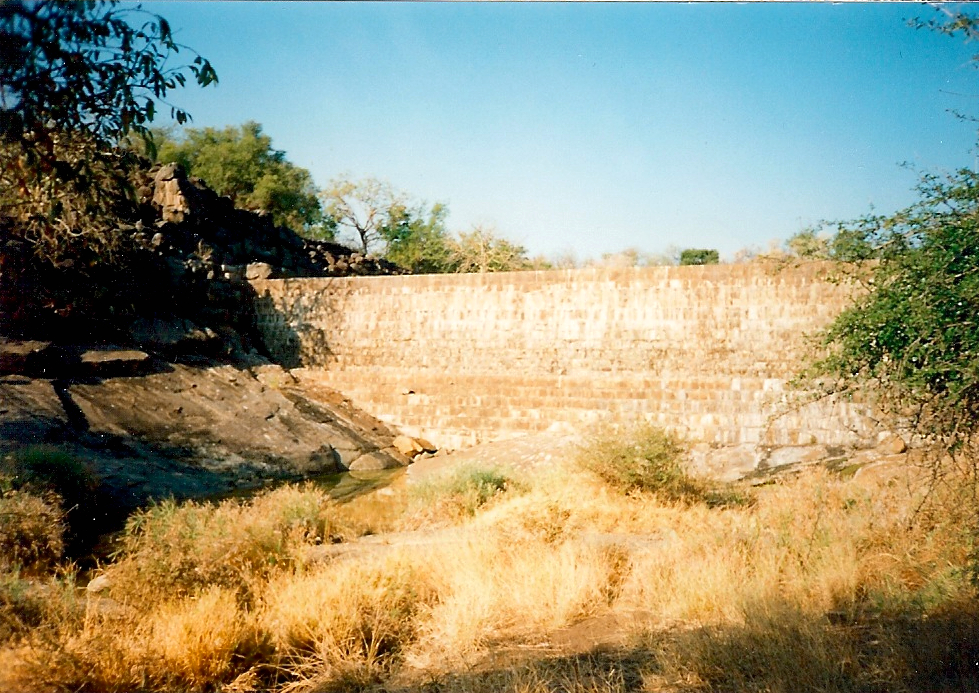
|
| Nyala Dam took three years to build--all by hand. The Whiteheads employ 40 Africans on the ranch |
Also, FFg
burned much cleaner than single F.
I did not, however,
risk using FFg on the heavier projectiles. There is a lot of steel in the barrels and they are solid rolled steel, but I am
not experienced enough to venture into realms unknown. I did shoot 8 drams of FFFg and the 1000-grain ball and the velocity
averaged 1461 fps. Again, I did not use increased charges due to fears of excessive pressure.
Accuracy of
the above ballistic tables was acceptable at the 50-yard targets I shot at through the chronograph. It seems the larger the
bore on double rifles the for forgiving the regulation. (Heavy loads should not be shot off the bench!)
The above tests
were the last time this cannon burned charcoal. The convenience of smokeless powder, the ease of cleaning, the economy
of shooting less grains, and being able to fly to a hunting destination (it is not possible to fly with black powder ammunition
in domestic or international flights) were justification for me to make the permanent switch to smokeless powder.
Blue Dot was
the powder of choice as it came highly recommended by several friends who are experienced with the bore rifles. I'm sure other
powders will work but since Blue Dot performed so well I felt there was no reason to expand my experimentation.
Components used
were 1/8" over powder wads (70-80 pounds of pressure) and 1/ 2" felt spacer or filler wads (lots of 'em). Primers were Winchester
209. Beginning with the 1000-grain round ball the ballistics were:
|
charge
(Taylor) |
MV |
ME |
|
MKO |
|
60 grains |
1094 |
2658 |
137 |
|
|
65 grains |
1163 |
3004 |
145 |
|
|
70 grains |
1235 |
3388 |
154 |
|
|
75 grains |
1315 |
3841 |
164 |
|
|
80 grains |
1418 |
4466 |
177 |
|
|
85 grains |
1470 |
4851 |
185 |
|
|
90 grains |
1560 |
5405 |
195 |
|
|
95 grains |
1631 |
5908 |
204 |
|
|
100 grains
1719 |
6563 |
215 |
|
NOTES: It is
a joy to avoid cleaning black powder residue! Recoil was mild and even tolerable with the heaviest loads. Accuracy remained
the same as with black powder.
The 1350-grain
paradox bullet was next. Velocities were:
|
60 grains |
1025 |
3150 |
173 |
|
65 grains |
1068 |
3420 |
180 |
|
70 grains |
1143 |
3910 |
193 |
|
75 grains |
1191 |
4253 |
201 |
|
80 grains |
1256 |
4730 |
212 |
NOTES: Recoil
was getting heavier but still within my limits. Accuracy remained good--about 4 inches at 50 yards.
The big
1620-grain bullet was last. Velocities were:
|
60 grains |
980 |
3456 |
198 |
|
65 grains |
1025 |
3780 |
208 |
|
70 grains |
1090 |
4275 |
221 |
|
75 grains |
1160 |
4841 |
235 |
NOTES: With
the low velocity, soft lead bullets would be needed for hunting. Ac-curacy remained good and recoil was much easier to digest
than with maximum black powder loads. However, velocity ws approximately 300fps slower than with heavy black powder loads.

When it was time to order new brass the only source
proved to be the best source--Dave Casey's Rocky Mountain Cartridge of Cody, Wyoming (307-587-9693). I have used Dave's products
for several double rifles as have many of my friends. The brass is of excellent quality and Dave's lathe-turned
brass holds up as well as any drawn brass (HDS, Kynoch, Bertram, BELL, A-Square) I have used. I asked Dave to make up
two boxes each of shotgun and rifle primers. I wanted to see if rifle primers would ignite such a large quantity of Blue Dot powder. If they could work I would be
easier for my reloading process to deprime and rep-rime with standard large rifle
primers. (The size and deprime die can push out the rifle primer and it will fall through the slot in
the ram. That can't be done with the shotgun primer so each has to be driven out with a punch and hammer. I use a Lee Auto
Prime II which easily primes large rifle primers through the shell holder. Again, shotshell primers have to be manually pressed
into the case using the press, a dowel, and a plug in the die
hole to push the primer in place with the ram of the press).
Large rifle magnum primers with 1000-grain round ball had occasional
hang-fires. When they worked the velocity averaged about 80 fps behind the same load ignited with shotgun primers. How-ever,
due to the hang-fires I avoided further use of rifle primers. Perhaps a hotter primer will be developed in the future and I would consider using it.
Large rifle primers with 8 grains of FFFg black powder under Blue Dot
and 1000-grain round ball worked very well. In fact using both
rifle and shotgun primers with the small charge of 3F black powder ve‑
locity increased
about 60 fps and there was far less variation in the velocity of each shot string (25fps vs. 80fps). The only drawback is
the cleaning of the bore and brass. Since shotgun primers didn't hang-fire there is really no need to use a duplex load. With
rifle primers, a duplex load is a necessity. So, I placed an order with Rocky Mountain Cartirdge for a life-time supply of
shotgun-primed brass cases.
Game awaits. Now my tendon is healed and back to normal I hope to take
the Locke on a hunting trip in 2004. I have scheduled a six week trip to South Africa in 2003 after buffalo, hippo, and plains
game but this is not the time for the big seven. Perhaps a moose hunt in the fall would work out. (In the fall of 2000 I called
in a moose that was too small to be legal to shoot but the 7-bore was shouldered and ready to go).
In closing, I have settled on three loads that will fulfill my target
practice and hunting needs. For the 1000-grain ball I shoot 85 grains of Blue Dot, for the 1350-grain Paradox bullet I shoot
75 grains of BD, and 65 grains of BD with the big 1620-grain bullet. They are below maxi-mum and are safe
in my rifle. I also made three changes to my shooting. I had a machinist friend modify the Lee Auto Prime II
to accept shotgun primers, I tumble lube all three bullet sizes with Lee alox lube as this reduces
fowling and is easy to apply, and I now shoot a 1220-grain original paradox bullet. This new bullet gives a about a 70-90fps
increase with the same powder charge over the 1350-grain bullet. The only other notes on my shooting
I have is the right barrel shoots about 45fps faster than the left barrel and I wrap one layer of nylon thread tape on the
equator of the round
balls and that completely eliminates lead buildup in the bores.
Owning this
bore rifle had opened a new world of shooting enjoyment for me. It gathers spectators with every visit to the range and it
is remarkable how well a 17-pound rifle can be handled. The only road not traveled is that
of locating a copy of the Locke factory ledger with hopes of finding the name of the original owner. Several letters and phone
calls to England have been dead ends. But that gives me something to shoot
for! Any lesser rifle could have been used anywhere in the hunting world but this cannon was only used on the largest of game.
It de-served no less.
One last
note. The loads listed are safe for the author to shoot in his rifle. The loading specifications above are for in-formational
purposes only. The author and publisher do not recommend them for use in your firearm(s). Always consult a gunsmith before
shooting any antique firearm. Due to the complexities and variables in reloading ammunition the author and publisher
are not responsible for any injuries or damages resulting from information contained in this article.
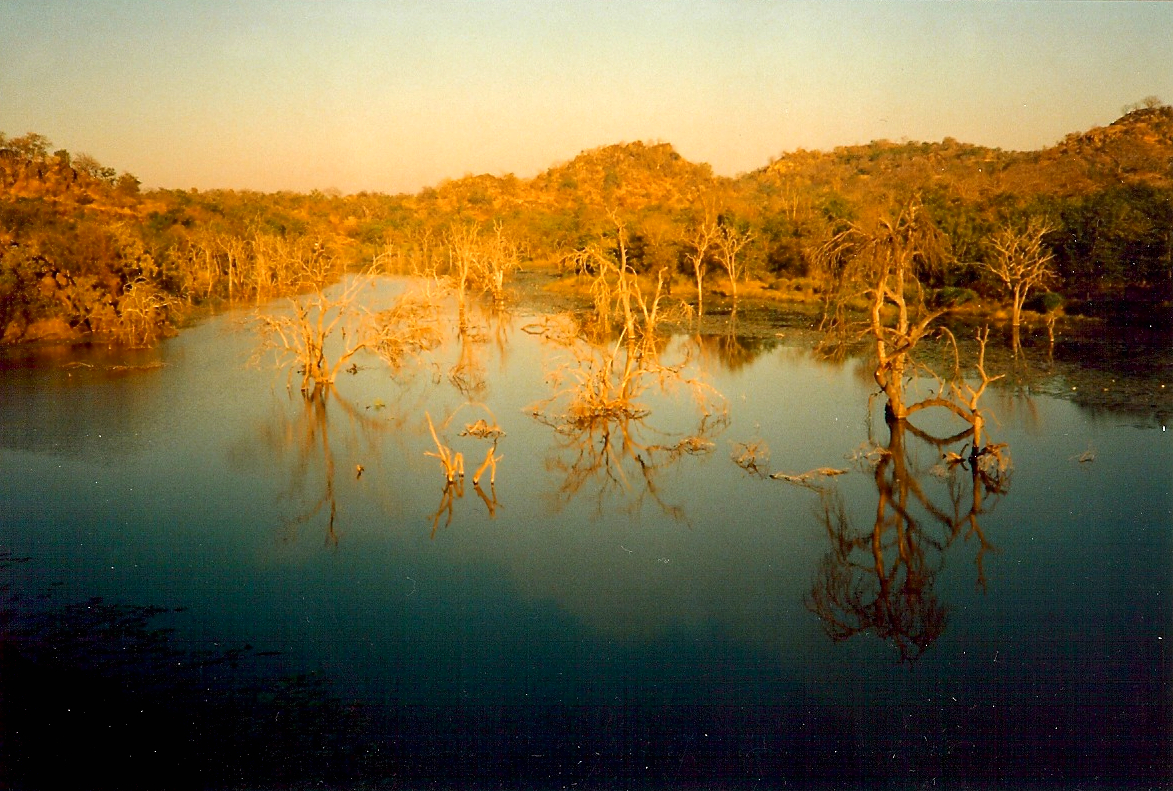
|
| Nyala Lake keeps the land and game watered even in dry spells. |
|

